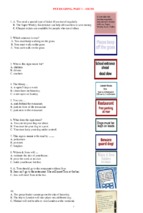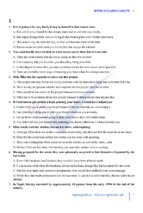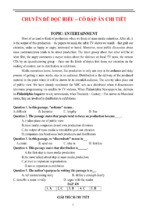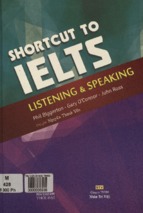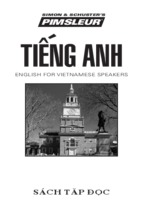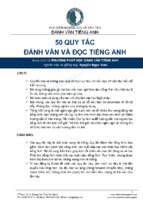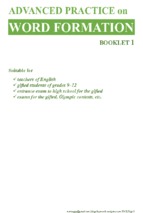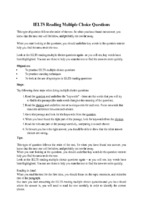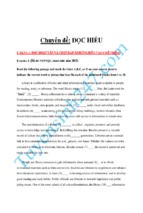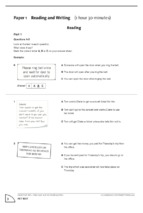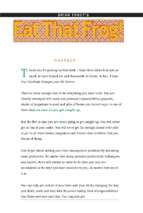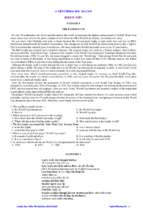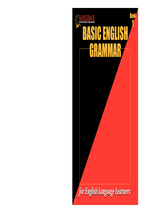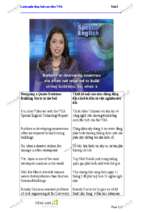Aashto lrfd bridge design specifications, customary u.s 6edition
AASHTO LRFD BRIDGE
DESIGN SPECIFICATIONS
Customary U.S. Units Sixth Edition 2012
ISBN: 978-1-56051-555-5
Publication Code: LRFDUS-6-I1
© 2013 by the American Association of State Highway and Transportation Officials.
All rights reserved. Duplication is a violation of applicable law.
2013
Revision
444 North Capitol Street, NW, Suite 249
Washington, DC 20001
202-624-5800 phone/202-624-5806 fax
www.transportation.org
© 2013 by the American Association of State Highway and Transportation Officials. All rights reserved. Duplication is
a violation of applicable law.
ISBN: 978-1-56051-555-5
Publication Code: LRFDUS-6-I1
© 2013 by the American Association of State Highway and Transportation Officials.
All rights reserved. Duplication is a violation of applicable law.
2013
Revision
American Association of State Highway and Transportation Officials
444 North Capitol Street, NW Suite 249
Washington, DC 20001
202-624-5800 phone/202-624-5806 fax
www.transportation.org
© 2012 by the American Association of State Highway and Transportation Officials. All rights reserved. Duplication is a
violation of applicable law.
ISBN: 978-1-56051-523-4
Pub Code: LRFDUS-6
© 2012 by the American Association of State Highway and Transportation Officials.
All rights reserved. Duplication is a violation of applicable law.
2012
Edition
PREFACE AND
ABBREVIATED TABLE OF CONTENTS
The AASHTO LRFD Bridge Design Specifications, Sixth Edition contains the following 15 sections and
an index:
1.
2.
3.
4.
5.
6.
7.
8.
9.
10.
11.
12.
13.
14.
15.
Introduction
General Design and Location Features
Loads and Load Factors
Structural Analysis and Evaluation
Concrete Structures
Steel Structures
Aluminum Structures
Wood Structures
Decks and Deck Systems
Foundations
Abutments, Piers, and Walls
Buried Structures and Tunnel Liners
Railings
Joints and Bearings
Design of Sound Barriers
Index
Detailed Tables of Contents precede each section. The last article of each section is a list of references displayed
alphabetically by author.
Figures, tables, and equations are denoted by their home article number and an extension, for example 1.2.3.4.5-1
wherever they are cited. In early editions, when they were referenced in their home article or its commentary, these objects
were identified only by the extension. For example, in Article 1.2.3.4.5, Eq. 1.2.3.4.5-2 would simply have been called
“Eq. 2.” The same convention applies to figures and tables. Starting with this edition, these objects are identified by their
whole nomenclature throughout the text, even within their home articles. This change was to increase the speed and
accuracy of electronic production (i.e., CDs and downloadable files) with regard to linking citations to objects.
Please note that the AASHTO materials standards (starting with M or T) cited throughout the LRFD Specifications
can be found in Standard Specifications for Transportation Materials and Methods of Sampling and Testing, adopted by
the AASHTO Highway Subcommittee on Materials. The individual standards are also available as downloads on the
AASHTO Bookstore, https://bookstore.transportation.org. Unless otherwise indicated, these citations refer to the current
edition. ASTM materials specifications are also cited and have been updated to reflect ASTM’s revised coding system,
e.g., spaces removed between the letter and number.
ix
© 2012 by the American Association of State Highway and Transportation Officials.
All rights reserved. Duplication is a violation of applicable law.
2012
Edition
SECTION 1: INTRODUCTION
TABLE OF CONTENTS
1
1.1—SCOPE OF THE SPECIFICATIONS .................................................................................................................. 1-1
1.2—DEFINITIONS ..................................................................................................................................................... 1-2
1.3—DESIGN PHILOSOPHY ..................................................................................................................................... 1-3
1.3.1—General ....................................................................................................................................................... 1-3
1.3.2—Limit States ................................................................................................................................................ 1-3
1.3.2.1—General............................................................................................................................................. 1-3
1.3.2.2—Service Limit State........................................................................................................................... 1-4
1.3.2.3—Fatigue and Fracture Limit State ...................................................................................................... 1-4
1.3.2.4—Strength Limit State ......................................................................................................................... 1-4
1.3.2.5—Extreme Event Limit States ............................................................................................................. 1-5
1.3.3—Ductility ..................................................................................................................................................... 1-5
1.3.4—Redundancy ............................................................................................................................................... 1-6
1.3.5—Operational Importance.............................................................................................................................. 1-7
1.4—REFERENCES..................................................................................................................................................... 1-7
1-i
© 2012 by the American Association of State Highway and Transportation Officials.
All rights reserved. Duplication is a violation of applicable law.
2012
Edition
SECTION 1
INTRODUCTION
1
1.1—SCOPE OF THE SPECIFICATIONS
C1.1
The provisions of these Specifications are intended for
the design, evaluation, and rehabilitation of both fixed and
movable highway bridges. Mechanical, electrical, and
special vehicular and pedestrian safety aspects of movable
bridges, however, are not covered. Provisions are not
included for bridges used solely for railway, rail-transit, or
public utilities. For bridges not fully covered herein, the
provisions of these Specifications may be applied, as
augmented with additional design criteria where required.
These Specifications are not intended to supplant
proper training or the exercise of judgment by the
Designer, and state only the minimum requirements
necessary to provide for public safety. The Owner or the
Designer may require the sophistication of design or the
quality of materials and construction to be higher than the
minimum requirements.
The concepts of safety through redundancy and
ductility and of protection against scour and collision are
emphasized.
The design provisions of these Specifications employ
the Load and Resistance Factor Design (LRFD)
methodology. The factors have been developed from the
theory of reliability based on current statistical knowledge
of loads and structural performance.
Methods of analysis other than those included in
previous Specifications and the modeling techniques
inherent in them are included, and their use is encouraged.
Seismic design shall be in accordance with either the
provisions in these Specifications or those given in the
AASHTO Guide Specifications for LRFD Seismic Bridge
Design.
The commentary is not intended to provide a complete
historical background concerning the development of these
or previous Specifications, nor is it intended to provide a
detailed summary of the studies and research data
reviewed in formulating the provisions of the
Specifications. However, references to some of the
research data are provided for those who wish to study the
background material in depth.
The commentary directs attention to other documents
that provide suggestions for carrying out the requirements
and intent of these Specifications. However, those
documents and this commentary are not intended to be a
part of these Specifications.
Construction specifications consistent with these
design specifications are the AASHTO LRFD Bridge
Construction Specifications. Unless otherwise specified,
the Materials Specifications referenced herein are the
AASHTO Standard Specifications for Transportation
Materials and Methods of Sampling and Testing.
The term “notional” is often used in these
Specifications to indicate an idealization of a physical
phenomenon, as in “notional load” or “notional
resistance.” Use of this term strengthens the separation of
an engineer's “notion” or perception of the physical world
in the context of design from the physical reality itself.
The term “shall” denotes a requirement for
compliance with these Specifications.
The term “should” indicates a strong preference for a
given criterion.
The term “may” indicates a criterion that is usable, but
other local and suitably documented, verified, and
approved criterion may also be used in a manner consistent
with the LRFD approach to bridge design.
1-1
© 2012 by the American Association of State Highway and Transportation Officials.
All rights reserved. Duplication is a violation of applicable law.
2012
Edition
1-2
AASHTO LRFD BRIDGE DESIGN SPECIFICATIONS
1.2—DEFINITIONS
Bridge—Any structure having an opening not less than 20.0 ft that forms part of a highway or that is located over or under
a highway.
Collapse—A major change in the geometry of the bridge rendering it unfit for use.
Component—Either a discrete element of the bridge or a combination of elements requiring individual design
consideration.
Design—Proportioning and detailing the components and connections of a bridge.
Design Life—Period of time on which the statistical derivation of transient loads is based: 75 yr for these Specifications.
Ductility—Property of a component or connection that allows inelastic response.
Engineer—Person responsible for the design of the bridge and/or review of design-related field submittals such as erection
plans.
Evaluation—Determination of load-carrying capacity of an existing bridge.
Extreme Event Limit States—Limit states relating to events such as earthquakes, ice load, and vehicle and vessel collision,
with return periods in excess of the design life of the bridge.
Factored Load—The nominal loads multiplied by the appropriate load factors specified for the load combination under
consideration.
Factored Resistance—The nominal resistance multiplied by a resistance factor.
Fixed Bridge—A bridge with a fixed vehicular or navigational clearance.
Force Effect—A deformation, stress, or stress resultant (i.e., axial force, shear force, torsional, or flexural moment) caused
by applied loads, imposed deformations, or volumetric changes.
Limit State—A condition beyond which the bridge or component ceases to satisfy the provisions for which it was designed.
Load and Resistance Factor Design (LRFD)—A reliability-based design methodology in which force effects caused by
factored loads are not permitted to exceed the factored resistance of the components.
Load Factor—A statistically-based multiplier applied to force effects accounting primarily for the variability of loads, the
lack of accuracy in analysis, and the probability of simultaneous occurrence of different loads, but also related to the
statistics of the resistance through the calibration process.
Load Modifier—A factor accounting for ductility, redundancy, and the operational classification of the bridge.
Model—An idealization of a structure for the purpose of analysis.
Movable Bridge—A bridge with a variable vehicular or navigational clearance.
Multiple-Load-Path Structure—A structure capable of supporting the specified loads following loss of a main loadcarrying component or connection.
Nominal Resistance—Resistance of a component or connection to force effects, as indicated by the dimensions specified in
the contract documents and by permissible stresses, deformations, or specified strength of materials.
Owner—Person or agency having jurisdiction over the bridge.
© 2012 by the American Association of State Highway and Transportation Officials.
All rights reserved. Duplication is a violation of applicable law.
2012
Edition
SECTION 1: INTRODUCTION
1-3
Regular Service—Condition excluding the presence of special permit vehicles, wind exceeding 55 mph, and extreme
events, including scour.
Rehabilitation—A process in which the resistance of the bridge is either restored or increased.
Resistance Factor—A statistically-based multiplier applied to nominal resistance accounting primarily for variability of
material properties, structural dimensions and workmanship, and uncertainty in the prediction of resistance, but also
related to the statistics of the loads through the calibration process.
Service Life—The period of time that the bridge is expected to be in operation.
Service Limit States—Limit states relating to stress, deformation, and cracking under regular operating conditions.
Strength Limit States—Limit states relating to strength and stability during the design life.
1.3—DESIGN PHILOSOPHY
1.3.1—General
C1.3.1
Bridges shall be designed for specified limit states to
achieve the objectives of constructibility, safety, and
serviceability, with due regard to issues of inspectability,
economy, and aesthetics, as specified in Article 2.5.
Regardless of the type of analysis used, Eq. 1.3.2.1-1
shall be satisfied for all specified force effects and
combinations thereof.
The limit states specified herein are intended to
provide for a buildable, serviceable bridge, capable of
safely carrying design loads for a specified lifetime.
The resistance of components and connections is
determined, in many cases, on the basis of inelastic
behavior, although the force effects are determined by
using elastic analysis. This inconsistency is common to
most current bridge specifications as a result of incomplete
knowledge of inelastic structural action.
1.3.2—Limit States
1.3.2.1—General
C1.3.2.1
Each component and connection shall satisfy
Eq. 1.3.2.1-1 for each limit state, unless otherwise
specified. For service and extreme event limit states,
resistance factors shall be taken as 1.0, except for bolts, for
which the provisions of Article 6.5.5 shall apply, and for
concrete columns in Seismic Zones 2, 3, and 4, for which
the provisions of Articles 5.10.11.3 and 5.10.11.4.1b shall
apply. All limit states shall be considered of equal
importance.
ηi γ i Qi ≤ φRn = Rr
(1.3.2.1-1)
in which:
For loads for which a maximum value of γi is appropriate:
ηi = ηD ηR ηI ≥ 0.95
(1.3.2.1-2)
For loads for which a minimum value of γi is appropriate:
ηi =
1
≤ 1.0
η D ηR ηI
Eq. 1.3.2.1-1 is the basis of LRFD methodology.
Assigning resistance factor φ = 1.0 to all nonstrength
limit states is a default, and may be over-ridden by
provisions in other Sections.
Ductility, redundancy, and operational classification
are considered in the load modifier η. Whereas the first
two directly relate to physical strength, the last concerns
the consequences of the bridge being out of service. The
grouping of these aspects on the load side of
Eq. 1.3.2.1-1 is, therefore, arbitrary. However, it
constitutes a first effort at codification. In the absence of
more precise information, each effect, except that for
fatigue and fracture, is estimated as ±5 percent,
accumulated geometrically, a clearly subjective
approach. With time, improved quantification of
ductility, redundancy, and operational classification, and
their interaction with system reliability, may be attained,
possibly leading to a rearrangement of Eq. 1.3.2.1-1, in
which these effects may appear on either side of the
equation or on both sides.
(1.3.2.1-3)
© 2012 by the American Association of State Highway and Transportation Officials.
All rights reserved. Duplication is a violation of applicable law.
2012
Edition
1-4
AASHTO LRFD BRIDGE DESIGN SPECIFICATIONS
where:
γi
=
load factor: a statistically based multiplier applied
to force effects
φ
=
resistance factor: a statistically based multiplier
applied to nominal resistance, as specified in
Sections 5, 6, 7, 8, 10, 11, and 12
ηi
=
load modifier: a factor relating to ductility,
redundancy, and operational classification
ηD =
a factor relating to ductility, as specified in
Article 1.3.3
ηR =
a factor relating to redundancy as specified in
Article 1.3.4
ηI
a factor relating to operational classification as
specified in Article 1.3.5
=
Qi =
force effect
Rn =
nominal resistance
Rr =
factored resistance: φRn
1.3.2.2—Service Limit State
The service limit state shall be taken as restrictions on
stress, deformation, and crack width under regular service
conditions.
1.3.2.3—Fatigue and Fracture Limit State
The fatigue limit state shall be taken as restrictions on
stress range as a result of a single design truck occurring at
the number of expected stress range cycles.
The fracture limit state shall be taken as a set of
material toughness requirements of the AASHTO
Materials Specifications.
1.3.2.4—Strength Limit State
Strength limit state shall be taken to ensure that
strength and stability, both local and global, are provided
to resist the specified statistically significant load
combinations that a bridge is expected to experience in its
design life.
The influence of η on the girder reliability index, β,
can be estimated by observing its effect on the minimum
values of β calculated in a database of girder-type bridges.
Cellular structures and foundations were not a part of the
database; only individual member reliability was
considered. For discussion purposes, the girder bridge data
used in the calibration of these Specifications was
modified by multiplying the total factored loads by
η = 0.95, 1.0, 1.05, and 1.10. The resulting minimum
values of β for 95 combinations of span, spacing, and type
of construction were determined to be approximately 3.0,
3.5, 3.8, and 4.0, respectively. In other words, using
η > 1.0 relates to a β higher than 3.5.
A further approximate representation of the effect of η
values can be obtained by considering the percent of
random normal data less than or equal to the mean value
plus λ σ, where λ is a multiplier, and σ is the standard
deviation of the data. If λ is taken as 3.0, 3.5, 3.8, and 4.0,
the percent of values less than or equal to the mean value
plus λ σ would be about 99.865 percent, 99.977 percent,
99.993 percent, and 99.997 percent, respectively.
The Strength I Limit State in the AASHTO LRFD
Design Specifications has been calibrated for a target
reliability index of 3.5 with a corresponding probability of
exceedance of 2.0E-04 during the 75-yr design life of the
bridge. This 75-yr reliability is equivalent to an annual
probability of exceedance of 2.7E-06 with a corresponding
annual target reliability index of 4.6. Similar calibration
efforts for the Service Limit States are underway. Return
periods for extreme events are often based on annual
probability of exceedance and caution must be used when
comparing reliability indices of various limit states.
C1.3.2.2
The service limit state provides certain experiencerelated provisions that cannot always be derived solely
from strength or statistical considerations.
C1.3.2.3
The fatigue limit state is intended to limit crack
growth under repetitive loads to prevent fracture during the
design life of the bridge.
C1.3.2.4
The strength limit state considers stability or yielding
of each structural element. If the resistance of any element,
including splices and connections, is exceeded, it is
assumed that the bridge resistance has been exceeded. In
fact, in multigirder cross-sections there is significant
elastic reserve capacity in almost all such bridges beyond
such a load level. The live load cannot be positioned to
maximize the force effects on all parts of the cross-section
© 2012 by the American Association of State Highway and Transportation Officials.
All rights reserved. Duplication is a violation of applicable law.
2012
Edition
SECTION 1: INTRODUCTION
1-5
simultaneously. Thus, the flexural resistance of the bridge
cross-section typically exceeds the resistance required for
the total live load that can be applied in the number of
lanes available. Extensive distress and structural damage
may occur under strength limit state, but overall structural
integrity is expected to be maintained.
C1.3.2.5
1.3.2.5—Extreme Event Limit States
The extreme event limit state shall be taken to ensure
the structural survival of a bridge during a major
earthquake or flood, or when collided by a vessel, vehicle,
or ice flow, possibly under scoured conditions.
Extreme event limit states are considered to be unique
occurrences whose return period may be significantly
greater than the design life of the bridge.
1.3.3—Ductility
C1.3.3
The structural system of a bridge shall be proportioned
and detailed to ensure the development of significant and
visible inelastic deformations at the strength and extreme
event limit states before failure.
Energy-dissipating devices may be substituted for
conventional ductile earthquake resisting systems and the
associated methodology addressed in these Specifications
or in the AASHTO Guide Specifications for Seismic Design
of Bridges.
For the strength limit state:
The response of structural components or connections
beyond the elastic limit can be characterized by either
brittle or ductile behavior. Brittle behavior is undesirable
because it implies the sudden loss of load-carrying
capacity immediately when the elastic limit is exceeded.
Ductile behavior is characterized by significant inelastic
deformations before any loss of load-carrying capacity
occurs. Ductile behavior provides warning of structural
failure by large inelastic deformations. Under repeated
seismic loading, large reversed cycles of inelastic
deformation dissipate energy and have a beneficial effect
on structural survival.
If, by means of confinement or other measures, a
structural component or connection made of brittle
materials can sustain inelastic deformations without
significant loss of load-carrying capacity, this component
can be considered ductile. Such ductile performance shall
be verified by testing.
In order to achieve adequate inelastic behavior the
system should have a sufficient number of ductile
members and either:
ηD ≥
1.05 for nonductile components and connections
=
1.00 for conventional designs and details
complying with these Specifications
≥
0.95 for components and connections for which
additional ductility-enhancing measures have
been specified beyond those required by these
Specifications
For all other limit states:
ηD =
1.00
•
Joints and connections that are also ductile and can
provide energy dissipation without loss of capacity;
or
•
Joints and connections that have sufficient excess
strength so as to assure that the inelastic response
occurs at the locations designed to provide ductile,
energy absorbing response.
© 2012 by the American Association of State Highway and Transportation Officials.
All rights reserved. Duplication is a violation of applicable law.
2012
Edition
1-6
AASHTO LRFD BRIDGE DESIGN SPECIFICATIONS
Statically ductile, but dynamically nonductile response
characteristics should be avoided. Examples of this
behavior are shear and bond failures in concrete members
and loss of composite action in flexural components.
Past experience indicates that typical components
designed in accordance with these provisions generally
exhibit adequate ductility. Connection and joints require
special attention to detailing and the provision of load
paths.
The Owner may specify a minimum ductility factor as
an assurance that ductile failure modes will be obtained.
The factor may be defined as:
μ=
Δu
Δy
(C1.3.3-1)
where:
Δu =
deformation at ultimate
Δy =
deformation at the elastic limit
The ductility capacity of structural components or
connections may either be established by full- or largescale testing or with analytical models based on
documented material behavior. The ductility capacity for a
structural system may be determined by integrating local
deformations over the entire structural system.
The special requirements for energy dissipating
devices are imposed because of the rigorous demands
placed on these components.
1.3.4—Redundancy
C1.3.4
Multiple-load-path and continuous structures should
be used unless there are compelling reasons not to use
them.
For the strength limit state:
For each load combination and limit state under
consideration, member redundancy classification
(redundant or nonredundant) should be based upon the
member contribution to the bridge safety. Several
redundancy measures have been proposed (Frangopol and
Nakib, 1991).
Single-cell boxes and single-column bents may be
considered nonredundant at the Owner’s discretion. For
prestressed concrete boxes, the number of tendons in each
web should be taken into consideration. For steel crosssections and fracture-critical considerations, see Section 6.
The Manual for Bridge Evaluation (2008) defines
bridge redundancy as “the capability of a bridge structural
system to carry loads after damage to or the failure of one
or more of its members.” System factors are provided for
post-tensioned segmental concrete box girder bridges in
Appendix E of the Guide Manual.
System reliability encompasses redundancy by
considering the system of interconnected components and
members. Rupture or yielding of an individual component
may or may not mean collapse or failure of the whole
structure or system (Nowak, 2000). Reliability indices for
ηR ≥
1.05 for nonredundant members
=
1.00 for conventional levels of redundancy,
foundation elements where φ already accounts for
redundancy as specified in Article 10.5
≥
0.95 for exceptional levels of redundancy beyond
girder continuity and a torsionally-closed crosssection
© 2012 by the American Association of State Highway and Transportation Officials.
All rights reserved. Duplication is a violation of applicable law.
2012
Edition
SECTION 1: INTRODUCTION
1-7
entire systems are a subject of ongoing research and are
anticipated to encompass ductility, redundancy, and
member correlation.
For all other limit states:
ηR =
1.00
1.3.5—Operational Importance
C1.3.5
This Article shall apply to the strength and extreme
event limit states only.
The Owner may declare a bridge or any structural
component and connection thereof to be of operational
priority.
Such classification should be done by personnel
responsible for the affected transportation network and
knowledgeable of its operational needs. The definition of
operational priority may differ from Owner to Owner and
network to network. Guidelines for classifying critical or
essential bridges are as follows:
For the strength limit state:
ηI
≥
1.05 for critical or essential bridges
=
1.00 for typical bridges
≥
0.95 for relatively less important bridges.
•
Bridges that are required to be open to all traffic once
inspected after the design event and are usable by
emergency vehicles and for security, defense,
economic, or secondary life safety purposes
immediately after the design event.
•
Bridges that should, as a minimum, be open to
emergency vehicles and for security, defense, or
economic purposes after the design event, and open to
all traffic within days after that event.
Owner-classified bridges may use a value for η < 1.0
based on ADTT, span length, available detour length, or
other rationale to use less stringent criteria.
For all other limit states:
ηI
=
1.00
1.4—REFERENCES
AASHTO. 2010. AASHTO LRFD Bridge Construction Specifications, Third Edition with Interims, LRFDCONS-3-M.
American Association of State Highway and Transportation Officials, Washington, DC.
AASHTO. 2011. AASHTO Guide Specifications for LRFD Seismic Bridge Design, Second Edition, LRFDSEIS-2.
American Association of State Highway and Transportation Officials, Washington, DC.
AASHTO. 2011. The Manual for Bridge Evaluation, Second Edition with Interim, MBE-2-M. American Association of
State Highway and Transportation Officials, Washington, DC.
AASHTO. 2011. Standard Specifications for Transportation Materials and Methods of Sampling and Testing,
31th Edition, HM-31. American Association of State Highway and Transportation Officials, Washington, DC.
Frangopol, D. M., and R. Nakib. 1991. “Redundancy in Highway Bridges.” Engineering Journal, American Institute of
Steel Construction, Chicago, IL, Vol. 28, No. 1, pp. 45–50.
© 2012 by the American Association of State Highway and Transportation Officials.
All rights reserved. Duplication is a violation of applicable law.
2012
Edition
1-8
AASHTO LRFD BRIDGE DESIGN SPECIFICATIONS
Mertz, D. 2009. “Quantification of Structural Safety of Highway Bridges” (white paper), Annual Probability of Failure.
Internal communication.
Nowak, A., and K. R. Collins. 2000. Reliability of Structures. McGraw–Hill Companies, Inc., New York, NY.
© 2012 by the American Association of State Highway and Transportation Officials.
All rights reserved. Duplication is a violation of applicable law.
2012
Edition
SECTION 2: GENERAL DESIGN AND LOCATION FEATURES
TABLE OF CONTENTS
2
2.1—SCOPE ................................................................................................................................................................. 2-1
2.2—DEFINITIONS ..................................................................................................................................................... 2-1
2.3—LOCATION FEATURES .................................................................................................................................... 2-3
2.3.1—Route Location ........................................................................................................................................... 2-3
2.3.1.1—General............................................................................................................................................. 2-3
2.3.1.2—Waterway and Floodplain Crossings ............................................................................................... 2-3
2.3.2—Bridge Site Arrangement ........................................................................................................................... 2-4
2.3.2.1—General............................................................................................................................................. 2-4
2.3.2.2—Traffic Safety ................................................................................................................................... 2-4
2.3.2.2.1—Protection of Structures ......................................................................................................... 2-4
2.3.2.2.2—Protection of Users ................................................................................................................ 2-5
2.3.2.2.3—Geometric Standards .............................................................................................................. 2-5
2.3.2.2.4—Road Surfaces ........................................................................................................................ 2-5
2.3.2.2.5—Vessel Collisions ................................................................................................................... 2-5
2.3.3—Clearances .................................................................................................................................................. 2-6
2.3.3.1—Navigational ..................................................................................................................................... 2-6
2.3.3.2—Highway Vertical ............................................................................................................................. 2-6
2.3.3.3—Highway Horizontal ......................................................................................................................... 2-6
2.3.3.4—Railroad Overpass ............................................................................................................................ 2-6
2.3.4—Environment ............................................................................................................................................... 2-7
2.4—FOUNDATION INVESTIGATION .................................................................................................................... 2-7
2.4.1—General ....................................................................................................................................................... 2-7
2.4.2—Topographic Studies .................................................................................................................................. 2-7
2.5—DESIGN OBJECTIVES....................................................................................................................................... 2-7
2.5.1—Safety ......................................................................................................................................................... 2-7
2.5.2—Serviceability ............................................................................................................................................. 2-8
2.5.2.1—Durability ......................................................................................................................................... 2-8
2.5.2.1.1—Materials ................................................................................................................................ 2-8
2.5.2.1.2—Self-Protecting Measures ....................................................................................................... 2-8
2.5.2.2—Inspectability.................................................................................................................................... 2-9
2.5.2.3—Maintainability ................................................................................................................................. 2-9
2.5.2.4—Rideability........................................................................................................................................ 2-9
2.5.2.5—Utilities ............................................................................................................................................ 2-9
2.5.2.6—Deformations ................................................................................................................................. 2-10
2.5.2.6.1—General ................................................................................................................................ 2-10
2.5.2.6.2—Criteria for Deflection.......................................................................................................... 2-11
2.5.2.6.3—Optional Criteria for Span-to-Depth Ratios ......................................................................... 2-13
2.5.2.7—Consideration of Future Widening ................................................................................................. 2-14
2.5.2.7.1—Exterior Beams on Multibeam Bridges ................................................................................ 2-14
2-i
© 2012 by the American Association of State Highway and Transportation Officials.
All rights reserved. Duplication is a violation of applicable law.
2012
Edition
2-ii
AASHTO LRFD BRIDGE DESIGN SPECIFICATIONS
2.5.2.7.2—Substructure ......................................................................................................................... 2-14
2.5.3—Constructibility .........................................................................................................................................2-14
2.5.4—Economy .................................................................................................................................................. 2-15
2.5.4.1—General ...........................................................................................................................................2-15
2.5.4.2—Alternative Plans ............................................................................................................................ 2-15
2.5.5—Bridge Aesthetics .....................................................................................................................................2-16
2.6—HYDROLOGY AND HYDRAULICS ............................................................................................................... 2-17
2.6.1—General ..................................................................................................................................................... 2-17
2.6.2—Site Data ................................................................................................................................................... 2-18
2.6.3—Hydrologic Analysis .................................................................................................................................2-18
2.6.4—Hydraulic Analysis ...................................................................................................................................2-19
2.6.4.1—General ...........................................................................................................................................2-19
2.6.4.2—Stream Stability .............................................................................................................................. 2-19
2.6.4.3—Bridge Waterway ........................................................................................................................... 2-20
2.6.4.4—Bridge Foundations ........................................................................................................................ 2-20
2.6.4.4.1—General.................................................................................................................................2-20
2.6.4.4.2—Bridge Scour ........................................................................................................................ 2-21
2.6.4.5—Roadway Approaches to Bridge .....................................................................................................2-23
2.6.5—Culvert Location, Length, and Waterway Area ........................................................................................ 2-23
2.6.6—Roadway Drainage ...................................................................................................................................2-24
2.6.6.1—General ...........................................................................................................................................2-24
2.6.6.2—Design Storm..................................................................................................................................2-24
2.6.6.3—Type, Size, and Number of Drains .................................................................................................2-24
2.6.6.4—Discharge from Deck Drains ..........................................................................................................2-25
2.6.6.5—Drainage of Structures.................................................................................................................... 2-25
2.7—BRIDGE SECURITY ........................................................................................................................................2-25
2.7.1—General ..................................................................................................................................................... 2-25
2.7.2—Design Demand ........................................................................................................................................2-26
2.8—REFERENCES ................................................................................................................................................... 2-26
© 2012 by the American Association of State Highway and Transportation Officials.
All rights reserved. Duplication is a violation of applicable law.
2012
Edition
SECTION 2
GENERAL DESIGN AND LOCATION FEATURES
2.1—SCOPE
C2.1
Minimum requirements are provided for clearances,
environmental protection, aesthetics, geological studies,
economy, rideability, durability, constructibility,
inspectability, and maintainability. Minimum requirements
for traffic safety are referenced.
Minimum requirements for drainage facilities and selfprotecting measures against water, ice, and water-borne
salts are included.
In recognition that many bridge failures have been
caused by scour, hydrology and hydraulics are covered in
detail.
2
2.2—DEFINITIONS
This Section is intended to provide the Designer with
sufficient information to determine the configuration and
overall dimensions of a bridge.
Aggradation—A general and progressive buildup or raising of the longitudinal profile of the channel bed as a result of
sediment deposition.
Check Flood for Bridge Scour—Check flood for scour. The flood resulting from storm, storm surge, and/or tide having a
flow rate in excess of the design flood for scour, but in no case a flood with a recurrence interval exceeding the typically
used 500 yr. The check flood for bridge scour is used in the investigation and assessment of a bridge foundation to
determine whether the foundation can withstand that flow and its associated scour and remain stable with no reserve. See
also superflood.
Clear Zone—An unobstructed, relatively flat area beyond the edge of the traveled way for the recovery of errant vehicles.
The traveled way does not include shoulders or auxiliary lanes.
Clearance—An unobstructed horizontal or vertical space.
Degradation—A general and progressive lowering of the longitudinal profile of the channel bed as a result of long-term
erosion.
Design Discharge—Maximum flow of water a bridge is expected to accommodate without exceeding the adopted design
constraints.
Design Flood for Bridge Scour—The flood flow equal to or less than the 100-yr flood that creates the deepest scour at
bridge foundations. The highway or bridge may be inundated at the stage of the design flood for bridge scour. The worstcase scour condition may occur for the overtopping flood as a result of the potential for pressure flow.
Design Flood for Waterway Opening—The peak discharge, volume, stage, or wave crest elevation and its associated
probability of exceedence that are selected for the design of a highway or bridge over a watercourse or floodplain. By
definition, the highway or bridge will not be inundated at the stage of the design flood for the waterway opening.
Detention Basin—A storm water management facility that impounds runoff and temporarily discharges it through a
hydraulic outlet structure to a downstream conveyance system.
Drip Groove—Linear depression in the bottom of components to cause water flowing on the surface to drop.
Five-Hundred-Year Flood—The flood due to storm and/or tide having a 0.2 percent chance of being equaled or exceeded
in any given year.
General or Contraction Scour—Scour in a channel or on a floodplain that is not localized at a pier or other obstruction to
flow. In a channel, general/contraction scour usually affects all or most of the channel width and is typically caused by a
contraction of the flow.
Hydraulics—The science concerned with the behavior and flow of liquids, especially in pipes and channels.
2-1
© 2012 by the American Association of State Highway and Transportation Officials.
All rights reserved. Duplication is a violation of applicable law.
2012
Edition
2-2
AASHTO LRFD BRIDGE DESIGN SPECIFICATIONS
Hydrology—The science concerned with the occurrence, distribution, and circulation of water on the earth, including
precipitation, runoff, and groundwater.
Local Scour—Scour in a channel or on a floodplain that is localized at a pier, abutment, or other obstruction to flow.
Mixed Population Flood—Flood flows derived from two or more causative factors, e.g., a spring tide driven by hurricanegenerated onshore winds or rainfall on a snowpack.
One-Hundred-Year Flood—The flood due to storm and/or tide having a 1 percent chance of being equaled or exceeded in
any given year.
Overtopping Flood—The flood flow that, if exceeded, results in flow over a highway or bridge, over a watershed divide, or
through structures provided for emergency relief. The worst-case scour condition may be caused by the overtopping flood.
Relief Bridge—An opening in an embankment on a floodplain to permit passage of overbank flow.
River Training Structure—Any configuration constructed in a stream or placed on, adjacent to, or in the vicinity of a
streambank to deflect current, induce sediment deposition, induce scour, or in some other way alter the flow and sediment
regimens of the stream.
Scupper—A device to drain water through the deck.
Sidewalk Width—Unobstructed space for exclusive pedestrian use between barriers or between a curb and a barrier.
Spring Tide—A tide of increased range that occurs about every two weeks when the moon is full or new.
Stable Channel—A condition that exists when a stream has a bed slope and cross-section that allows its channel to
transport the water and sediment delivered from the upstream watershed without significant degradation, aggradation, or
bank erosion.
Stream Geomorphology—The study of a stream and its floodplain with regard to its land forms, the general configuration
of its surface, and the changes that take place due to erosion and the buildup of erosional debris.
Superelevation—A tilting of the roadway surface to partially counterbalance the centrifugal forces on vehicles on
horizontal curves.
Superflood—Any flood or tidal flow with a flow rate greater than that of the 100-yr flood but not greater than a 500-yr
flood.
Tide—The periodic rise and fall of the earth s ocean that results from the effect of the moon and sun acting on a rotating
earth.
Watershed—An area confined by drainage divides, and often having only one outlet for discharge; the total drainage area
contributing runoff to a single point.
Waterway—Any stream, river, pond, lake, or ocean.
Waterway Opening—Width or area of bridge opening at a specified stage, and measured normal to principal direction of
flow.
© 2012 by the American Association of State Highway and Transportation Officials.
All rights reserved. Duplication is a violation of applicable law.
2012
Edition
SECTION 2: GENERAL DESIGN AND LOCATION FEATURES
2-3
2.3—LOCATION FEATURES
2.3.1—Route Location
2.3.1.1—General
The choice of location of bridges shall be supported by
analyses of alternatives with consideration given to
economic, engineering, social, and environmental concerns
as well as costs of maintenance and inspection associated
with the structures and with the relative importance of the
above-noted concerns.
Attention, commensurate with the risk involved, shall
be directed toward providing for favorable bridge locations
that:
Fit the conditions created by the obstacle being
crossed;
Facilitate practical cost effective design, construction,
operation, inspection and maintenance;
Provide for the desired level of traffic service and
safety; and
Minimize adverse highway impacts.
2.3.1.2—Waterway and Floodplain Crossings
Waterway crossings shall be located with regard to
initial capital costs of construction and the optimization of
total costs, including river channel training works and the
maintenance measures necessary to reduce erosion. Studies
of alternative crossing locations should include assessments
of:
The hydrologic and hydraulic characteristics of the
waterway and its floodplain, including channel
stability, flood history, and, in estuarine crossings,
tidal ranges and cycles;
The effect of the proposed bridge on flood flow
patterns and the resulting scour potential at bridge
foundations;
The potential for creating new or augmenting existing
flood hazards; and
C2.3.1.2
Detailed guidance on procedures for evaluating the
location of bridges and their approaches on floodplains is
contained in Federal Regulations and the Planning and
Location Chapter of the AASHTO Model Drainage Manual
(see Commentary on Article 2.6.1). Engineers with
knowledge and experience in applying the guidance and
procedures in the AASHTO Model Drainage Manual
should be involved in location decisions. It is generally safer
and more cost effective to avoid hydraulic problems through
the selection of favorable crossing locations than to attempt
to minimize the problems at a later time in the project
development process through design measures.
Experience at existing bridges should be part of the
calibration or verification of hydraulic models, if possible.
Evaluation of the performance of existing bridges during
past floods is often helpful in selecting the type, size, and
location of new bridges.
Environmental impacts on the waterway and its
floodplain.
Bridges and their approaches on floodplains should be
located and designed with regard to the goals and
objectives of floodplain management, including:
Prevention of uneconomic, hazardous, or incompatible
use and development of floodplains;
© 2012 by the American Association of State Highway and Transportation Officials.
All rights reserved. Duplication is a violation of applicable law.
2012
Edition
2-4
AASHTO LRFD BRIDGE DESIGN SPECIFICATIONS
Avoidance of significant transverse and longitudinal
encroachments, where practicable;
Minimization of adverse highway impacts and
mitigation of unavoidable impacts, where practicable;
Consistency with the intent of the standards and
criteria of the National Flood Insurance Program,
where applicable;
Long-term aggradation or degradation; and
Commitments
approvals.
made
to
obtain
environmental
2.3.2—Bridge Site Arrangement
2.3.2.1—General
C2.3.2.1
The location and the alignment of the bridge should be
selected to satisfy both on-bridge and under-bridge traffic
requirements. Consideration should be given to possible
future variations in alignment or width of the waterway,
highway, or railway spanned by the bridge.
Where appropriate, consideration should be given to
future addition of mass-transit facilities or bridge widening.
Although the location of a bridge structure over a
waterway is usually determined by other considerations than
the hazards of vessel collision, the following preferences
should be considered where possible and practical:
Locating the bridge away from bends in the navigation
channel. The distance to the bridge should be such that
vessels can line up before passing the bridge, usually
eight times the length of the vessel. This distance
should be increased further where high currents and
winds are prevalent at the site.
Crossing the navigation channel near right angles and
symmetrically with respect to the navigation channel.
Providing an adequate distance from locations with
congested navigation, vessel berthing maneuvers or
other navigation problems.
Locating the bridge where the waterway is shallow or
narrow and the bridge piers could be located out of
vessel reach.
2.3.2.2—Traffic Safety
2.3.2.2.1—Protection of Structures
C2.3.2.2.1
Consideration shall be given to safe passage of
vehicles on or under a bridge. The hazard to errant vehicles
within the clear zone should be minimized by locating
obstacles at a safe distance from the travel lanes.
© 2012 by the American Association of State Highway and Transportation Officials.
All rights reserved. Duplication is a violation of applicable law.
2012
Edition
SECTION 2: GENERAL DESIGN AND LOCATION FEATURES
Pier columns or walls for grade separation structures
should be located in conformance with the clear zone concept
as contained in Chapter 3 of the AASHTO Roadside Design
Guide, 1996. Where the practical limits of structure costs,
type of structure, volume and design speed of through traffic,
span arrangement, skew, and terrain make conformance with
the AASHTO Roadside Design Guide impractical, the pier
or wall should be protected by the use of guardrail or other
barrier devices. The guardrail or other device should, if
practical, be independently supported, with its roadway face
at least 2.0 ft. from the face of pier or abutment, unless a
rigid barrier is provided.
The face of the guardrail or other device should be at
least 2.0 ft. outside the normal shoulder line.
2.3.2.2.2—Protection of Users
Railings shall be provided along the edges of structures
conforming to the requirements of Section 13.
All protective structures shall have adequate surface
features and transitions to safely redirect errant traffic.
In the case of movable bridges, warning signs, lights,
signal bells, gates, barriers, and other safety devices shall
be provided for the protection of pedestrian, cyclists, and
vehicular traffic. These shall be designed to operate before
the opening of the movable span and to remain operational
until the span has been completely closed. The devices
shall conform to the requirements for ―Traffic Control at
Movable Bridges,‖ in the Manual on Uniform Traffic
Control Devices or as shown on plans.
Where specified by the Owner, sidewalks shall be
protected by barriers.
2-5
The intent of providing structurally independent
barriers is to prevent transmission of force effects from the
barrier to the structure to be protected.
C2.3.2.2.2
Protective structures include those that provide a safe
and controlled separation of traffic on multimodal facilities
using the same right-of-way.
Special conditions, such as curved alignment, impeded
visibility, etc., may justify barrier protection, even with low
design velocities.
2.3.2.2.3—Geometric Standards
Requirements of the AASHTO publication A Policy on
Geometric Design of Highways and Streets shall either be
satisfied or exceptions thereto shall be justified and
documented. Width of shoulders and geometry of traffic
barriers shall meet the specifications of the Owner.
2.3.2.2.4—Road Surfaces
Road surfaces on a bridge shall be given antiskid
characteristics, crown, drainage, and superelevation in
accordance with A Policy on Geometric Design of
Highways and Streets or local requirements.
2.3.2.2.5—Vessel Collisions
Bridge structures shall either be protected against
vessel collision forces by fenders, dikes, or dolphins as
specified in Article 3.14.15, or shall be designed to
withstand collision force effects as specified in
Article 3.14.14.
C2.3.2.2.5
The need for dolphin and fender systems can be
eliminated at some bridges by judicious placement of bridge
piers. Guidance on use of dolphin and fender systems is
included in the AASHTO Highway Drainage Guidelines,
Volume 7; Hydraulic Analyses for the Location and Design of
Bridges; and the AASHTO Guide Specification and
Commentary for Vessel Collision Design of Highway Bridges.
© 2012 by the American Association of State Highway and Transportation Officials.
All rights reserved. Duplication is a violation of applicable law.
2012
Edition
- Xem thêm -

